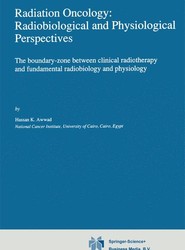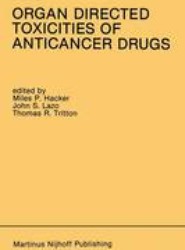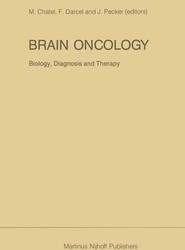(To see other currencies, click on price)
MORE ABOUT THIS BOOK
Contents:
1. Is there Clinical Relevance for Therapies which Disrupt the Metastatic Cascade?.- I. Introduction.- II. Primary Cancer and Vascular Invasion.- A. Tumor Stage.- B. Histology and Differentiation.- C. Tissue of Origin.- III. Circulating Cancer Cells.- IV. Metastatic Potential of Metastases.- V. Summary.- 2. Overview of the Metastatic Cascade.- I. Is Metastasis a Random or Non-Random Process?.- A. Heterogeneity.- B. Clones.- C. Randomness or Non-Randomness.- D. Conclusions.- II. Release 1.- A. Site.- B. Detachment Factors.- 1. Growth-rate and detachment.- 2. Necrosis and detachment.- 3. Enzymes and detachment.- III. Invasion.- IV. Arrest.- A. Biophysical Aspects of Arrest.- B. The Role of Platelets and Fibrin in Arrest.- C. General Host Effects.- D. Repetitive Events.- V. Release 2.- VI. The Formation of Metastases from Micrometastases.- VII. Conclusions.- 3. Overview on Blood Coagulation Proteins.- I. Introduction.- II. Structural Characteristics of Serine Proteinases.- III. The Role of Vitamin K.- IV. Fibrinogen.- V. Regulation of Blood Coagulation.- A. The Intrinsic Pathway.- B. The Extrinsic Pathway.- C. The Relationship between the Intrinsic and Extrinsic Pathways.- VI. Inhibitors of Blood Coagulation.- VII. Role of Platelets in Blood Coagulation.- VIII. Fibrinolysis.- 4. The Microinjury Hypothesis and Metastasis.- I. The Silent Sector of the Metastatic Cascade.- II. The Microinjury Hypothesis.- III. Conclusion.- 5. Hemostatic Abnormalities in Tumor-Bearing Animals.- I. Introduction.- II. Animal Models of Dissemination.- III. Lung Colony Models.- IV. Spontaneous Metastasis Models.- V. Pathophysiological Mechanisms.- VI. Conclusions.- 6. Evidence for a Tumor Proteinase in Blood Coagulation.- I. Introduction.- II. Purification of Cancer Procoagulant.- III. Characterization of Cancer Procoagulant.- IV. Distribution of Cancer Procoagulant.- V. Tissue Factor as the Tumor Procoagulant.- VI. Rationale For Cancer Procoagulant.- 7. Relationship between Procoagulant Activity and Metastatic Capacity of Tumor Cells.- I. Introduction.- II. Fibrin and Tumors.- III. Cancer Cell Procoagulants.- IV. Role of Procoagulants in Metastasis.- A. Hematologic Phase Model.- B. Spontaneous Models.- V. Clinical Relevance.- 8. Fibrin Formation: Implications for Tumor Growth and Metastasis.- I. Introduction and Historical Background.- II. The Nature of Fibrin Deposits in Tissues.- III. Fibrin is a Component of the Tumor Microenvironment.- A. Guinea Pig Hepato (bile duct) Carcinomas.- 1. Line 1 carcinomas.- 2. Line 10 carcinomas.- B. Mouse Breast Carcinomas.- C. Human Tumors.- 1. Infiltrating ductal breast carcinoma.- 2. Hodgkin's disease and other malignant lymphomas.- D. Conclusions.- IV. Tumor Secreted Mediators can Generate Tumor Associated Fibrin Deposits.- A. Tumor Secreted Vascular Permeability Factor (PF).- B. Tumor Associated Procoagulants.- 1. Tissue factor-like activity.- 2. Factor X cleaving activities.- 3. Shed plasma membrane vesicles.- 4. Thrombin-like and factor XIII-like activities.- V. Summary and Conclusions.- 9. Perspectives on the Role of Platelets in Hemostasis and Thrombosis.- I. Introduction.- A. Platelet Adhesion.- B. Platelet Release Reaction.- C. Platelet Aggregation.- D. Coagulant Activities of Platelets.- E. Role of Platelets in Contact Activation.- II. Interaction of Platelets with Coagulation Factors.- A. Interactions of Platelets with Factor VIII.- B. The Interaction of Platelets with Factor V.- C. Interactions of Platelets with Vitamin K-Dependent Clotting Factors.- D. The Role of Platelets in the Intrinsic Activation of Factor X and Prothrombin.- E. Platelet Activation as It Relates to the Conversion of Prothrombin to Thrombin.- III. Other Potential Consequences Of Platelet Activation.- 10. Mechanisms of Platelet Aggregation by Murine Tumor Cell Spheroids.- I. Introduction.- II. Experimental Systems.- III. Platelet-Vesicle Interactions.- A. Platelet Aggregating Activity Shed Spontaneously by Cells.- 1. Spontaneous shedding of vesicles by 15091A.- 2. Activity of vesicles isolated by sucrose density gradient centrifugation.- B. Platelet Aggregating Activity Released by Augmented Shedding.- 1. Isotonic low ionic strength medium.- 2. Urea.- 3. Trypsin.- IV. Conclusions.- 11. Heterogenous Mechanisms of Tumor Cell-Induced Platelet Aggregation with Possible Pharmacological Strategy Toward Prevention of Metastases.- I. Introduction.- II. Materials and Methods.- III. Results.- A. Tumors which Require Complement, a Vesicular Cell Surface, Sialo-Lipoprotein Component, Divalent Cation and a Stable Plasma Factor for Platelet Aggregation Activity.- B. Tumors which Aggregate Platelets via the Generation of Thrombin.- C. Tumors which Require a Trypsin Sensitive Protein for Platelet Aggregating Activity.- D. Effect of Pharmacologic Agents on the Three Mechanisms of Tumor-Induced Platelet Aggregation.- IV. Discussion.- 12. Tumor Cysteine Proteinases, Platelet Aggregation and Metastasis.- I. Cysteine Proteinases.- II. Tumor Proteolytic Enzymes and Metastasis.- III. Tumor Cysteine Proteinases and Metastasis.- A. Cysteine Proteinase Activity in Tumors.- B. Cysteine Proteinase Activity Released from Tumors.- C. Tumor Cysteine Proteinases and Platelet Aggregation.- IV. Summary.- 13. Arachidonate Metabolism in Platelets and Blood Vessels.- I. Introduction.- II. Arachidonate Metabolism.- A. Phospholipase Activity.- B. Cyclooxygenase Activity.- C. PGI2 Synthase and Thromboxane A2 Synthase.- D. Arachidonate Lipoxygenation.- E. Metabolism of Prostaglandins and Thromboxanes.- III. Mechanism of Action of TXA2 and PGI2.- IV. Summary.- 14. Prostacyclin/Thromboxanes and Tumor Cell Metastasis.- I. Introduction.- II. Platelets, Coagulation and Metastasis.- III. Prostacyclin, Thromboxanes, Platelets And Metastasis.- A. Prostacyclin Effects In Vivo and In Vitro.- 1. Prostacyclin effects on TCIPA.- 2. Prostacyclin effects on platelet-induced tumor cell adhesion in vitro.- 3. Prostacyclin effects on metastasis in vivo.- 4. Role of endogenous PGI2 in tumor metastasis.- 5. Effect of agents that stimulate or synergize with endogenous PGI2 production.- a. Agents that alter PGI2 metabolism.- b. Thromboxane synthase inhibitors.- IV. Conclusions.- 15. Evidence for Altered Arachidonic Acid Metabolism in Tumor Metastasis.- I. Introduction.- II. Normal Platelet and Vessel Wall Activity.- III. Platelets and Tumor Growth.- IV. Production of Prostaglandins by Tumor Cells.- V. Role of Prostaglandins in Tumor Metastasis.- VI. Summary.- 16. Calcium Channel Blockers: Inhibitors of Tumor Cell-Platelet-Endothelial Cell Interactions.- I. Calcium Channel Blockers.- II. Role of Platelets in Tumor Metastasis.- III. Rationale for Use of Calcium Channel Blockers as Antimetastatic Agents.- IV. Antiplatelet Effects of Calcium Channel Blockers.- A. Platelet Aggregation Induced by Chemical Agonists.- B. Platelet Aggregation Induced by Tumor Cells.- C. Platelet-Enhanced Adhesion of Tumor Cells to Endothelium.- V. Antmetastatic Effects of Calcium Channel Blockers.- VI. Summary.- 17. Evidence for the Antimetastatic Effects of Coumarin Derivatives.- I. Background.- II. Experimental Models.- A. Lung Colonies.- B. Spontaneous Metastases.- III. Anticoagulants and Tumor Metastases.- IV. Coumarin Derivatives.- A. Pharmacology and Toxicology of Coumarins.- B. Antitumor Effects of Coumarins.- C. Antimetastatic Effects of Coumarin Derivatives.- D. Vitamin K Deficiency and Experimental Metastases.- V. The Vitamin K Dependent Cancer Procoagulant.- VI. Coumarin Derivatives and Macrophages.- VII. Conclusion.- 18. Mitogenic Stimulation of Tumor Cells by Platelet Derived Growth Factors.- I. Introduction.- II. Platelet-Derived Growth Factor for Mesenchymal Cells (PDGF1).- III. Platelet-Derived Growth Factor for Transformed Cells (PDGF 2).- IV. Transforming Growth Factors (TGF) From Tumor Cells.- V. Clinical Trial - Adjuvant Aspirin Therapy in Colo-Rectal Cancer.- A. Patient Selection and Treatment Protocol.- B. Results.- C. Future Directions.- 19. Role of the Vascular Endothelium in Hemostasis.- I. Structure of Endothelium.- II. Antithrombotic Functions of Endothelium.- A. Surface Charge.- B. Heparin-Like Substances.- C. Proteinase Inhibitors.- D. Thrombin and the Endothelium.- E. Endothelium and Fibrinolysis.- F. Other Surface Membrane Properties.- G. Prostacyclin and Endothelium.- III. Prothrombotic Functions of Endothelium.- A. Thrombogenic Glycoproteins.- B. Changes in Endothelial Surface.- IV. Interaction of Endothelium with Blood Cells.- V. Summary.- 20. The Cellular Interactions of Metastatic Tumor Cells with Special Reference to Endothelial Cells and their Basal Lamina-Like Matrix.- I. Introduction.- II. Cellular Interactions of Tumor Cells in Circulation.- III. Interactions of Tumor Cells with Vascular Endothelium.- IV. Degradation of Endothelial Basal Lamina by Tumor Cells.- V. Interactions of Tumor Cells with Intact Blood Vessels.- VI. Summary.- 21. Interaction of Tumor Cells with the Basement Membrane of Endothelium.- I. Introduction.- II. Structure and Function of Basement Membranes.- III. Attachment of Tumor Cells to Basement Membranes.- A. Selection for Metastatic Cells by Binding to Laminin or Fibronectin.- B. Tumor Cell Surface Receptors for Laminin.- C. Molecular Structure and Function of Laminin and Proteinase-Derived Fragments of Laminin.- D. Adhesive Behavior of Metastatic Cells.- IV. BM Degradation Mediated By Tumor-Cell Derived Proteolytic Enzymes.- A. Role of Type IV Collagenase and Type V Collagenase.- B. Role of Plasminogen Activator and Plasmin.- C. Enzymatic Cascade for BM Degradation.- V. Tumor Cell Locomotion into Vacancy Created By Proteolytic Degradation of the BM.- VI. Potential Significance of Metastatic Cell Degradation of the BM To Diagnosis and Therapy of Human Cancer.- 22. Hemostatic Alterations in Cancer Patients.- I. Thromboembolic Disorders.- II. Hemorrhagic Disorders.- III. Laboratory Abnormalities.- A. Routine Tests.- B. Fibrinopeptide A Measurements.- IV. Summary.- 23. Historical Overview of Clinical Experience with Anticoagulant Therapy.- I. Introduction.- II. Early Observations and Hypotheses.- III. The Coagulation Pathway and the Incidence of Cancer.- IV. Therapeutic Trials of Anticoagulation in Cancer Patients.- A. Uncontrolled or Historically Controlled Trials.- 1. Warfarin trials.- 2. Heparin trials.- 3. Miscellaneous anticoagulants.- B. Concurrently Controlled Trials of Anticoagulation.- C. Summary of Therapeutic Trials.- 1. Reported toxicities in therapeutic trials of anticoagulation for cancer.- 2. Comments on human trials to date.- V. Summary.- 24. Rationale for Anticoagulant Treatment of Cancer.- I. Introduction.- II. Possible Tumor Cell Interaction with Hemostatic Mechanisms.- A. Platelets.- B. Fibrin.- III. Discussion.- 25. The Design and Execution of Anticoagulant Therapy Trials in Cancer.- I. Introduction.- II. Effects of Reduced Blood Coagulability on Cancer.- III. Clinical Trials of Anticoagulants in Cancer.- A. The Case for Prospective, Randomized Anticoagulant Studies.- B. Blinding of Anticoagulant Trials.- IV. Discussion.- Appendix I.- Appendix II.- 26. Experimental and Clinical Experience with Pyrimido - Pyrimidine Derivatives in the Inhibition of Malignant Metastasis Formation.- I. Introduction.- II. The Effect of Pyrimido - Pyrimidine Derivatives on Cell Growth and Metastasis Formation in Animals.- III. Clinical Results of Metastasis Prophylaxis in Malignant Human Tumors Using the Pyrimido - Pyrimidine Derivative Mopidamole (Ra 233).- IV. Conclusions.- 27. Current Clinical Trials with Anticoagulant Therapy in the Management of Cancer Patients.- I. Introduction.- II. Historical Overview.- A. Clinical Background.- B. Research Background.- III. Completed Clinical Trials.- IV. Summary of Current Concepts for Clinical Trials.- A. Current Clinical Trials.- V. Summary.
PRODUCT DETAILS
Publisher: Springer (Springer-Verlag New York Inc.)
Publication date: October, 2011
Pages: 432
Weight: 700g
Availability: Available
Subcategories: Oncology
From the same series














































































